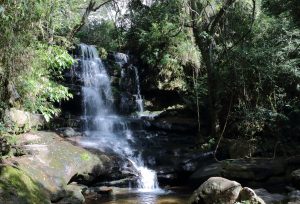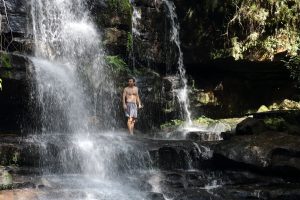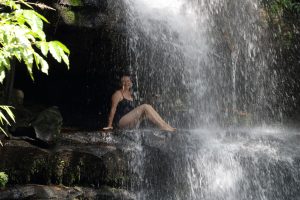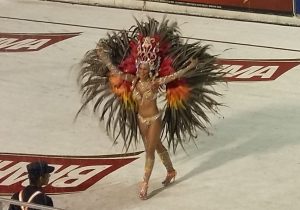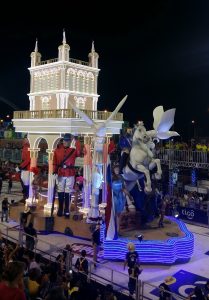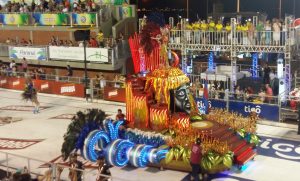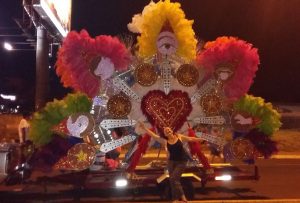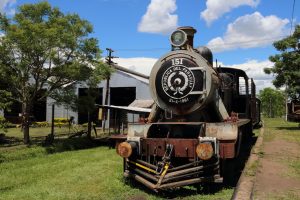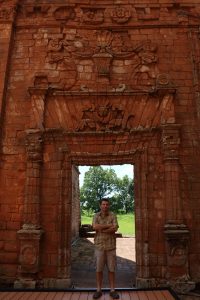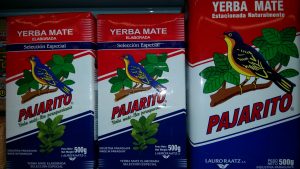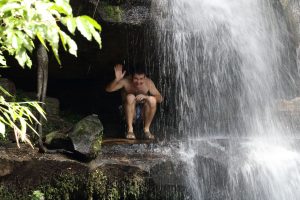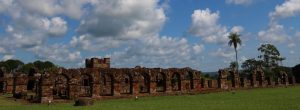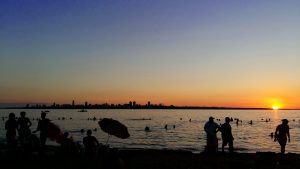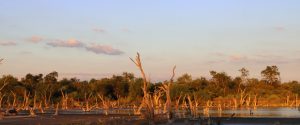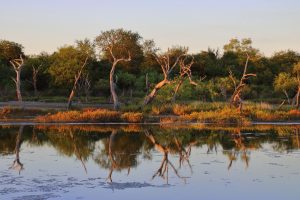The Chaco… a chuffing big, flat plain stretching east from the Andes. Covering eastern Bolivia, north-east Argentina, a bit of south-west Brazil and much of Paraguay… it’s big. After the descent from the Bolivian altiplano, it’s a long, long, straight road reaching over 800km to Asuncion. We expect the Chaco to be hot. Turns out… our introduction to Paraguay is not just hot, but damned hot! And what’s Paraguay all about beyond the Chaco? Read on in the Paraguay blog…

The Chaco – hot, rough and hot
The lion’s share of the Chaco belonged to Bolivia until the 1930s when they carelessly lost it to Paraguay in the bitter Chaco War. We learned a bit about this in the museums of Potosi some months ago, but now that we have actually been and seen the place with our own eyes, we can’t help wondering what on earth they thought they were fighting over? Did they think there were diamonds, or oil, or treacle mines or something under here? It’s not immediately obvious to the casual observer travelling through in the extraordinary heat of the January sun, why anyone would want to fight over this patch; but that could be said about many wars over history I suppose.
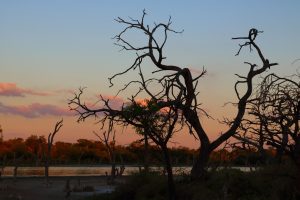 As we start our drive across the Chaco in the cool of Cuthbert’s comfortably air-conned front-cab, the external temperature guage shows a whopping 50°C!! It’s hard to find the words to describe to someone who has never faced it, the experience of existing in 50°C (in UK there is nationwide panic when the thermometer hits a balmy 20°C!!). 30°C is very warm, 40° can be uncomfortable but 50° is just plain nasty. From our years living in the Arabian Gulf (where these temperatures are on par for several months each year) we consider ourselves reasonably hardened to these things, but in Qatar we slept in an air-conned villa! Here, in the daytime for driving we have blissful aircon in the front cabin, but in the living cabin we have only a fan keeping us cool.
As we start our drive across the Chaco in the cool of Cuthbert’s comfortably air-conned front-cab, the external temperature guage shows a whopping 50°C!! It’s hard to find the words to describe to someone who has never faced it, the experience of existing in 50°C (in UK there is nationwide panic when the thermometer hits a balmy 20°C!!). 30°C is very warm, 40° can be uncomfortable but 50° is just plain nasty. From our years living in the Arabian Gulf (where these temperatures are on par for several months each year) we consider ourselves reasonably hardened to these things, but in Qatar we slept in an air-conned villa! Here, in the daytime for driving we have blissful aircon in the front cabin, but in the living cabin we have only a fan keeping us cool.
Our first night down on the Chaco isn’t an unmitigated success, but it could have been worse. Unlike in Qatar, the Chaco temperatures drop to a more comfortable 30-something degrees at night, so we did manage to sleep well. Nevertheless, on Chaco Day Two we were up early and heading on the road to get some of the many miles under our belt towards the slightly cooler climate of central Paraguay. Unfortunately, our Chaco Progress Chart is hampered significantly by the dreadful, dreadful, dreadful road condition.
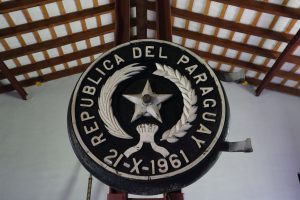 The Trans-Chaco Highway was clearly a rough dirt-road for many years. At some time in the not too distant past they decided to chuck a bit of asphalt on top of the dirt without troubling themselves with the minor detail of hardcore-basework. It doesn’t take special powers and a crystal ball to predict that two inches of tarmac spread onto a bank of mud is highly likely to wash away with the first bit of drizzle.
The Trans-Chaco Highway was clearly a rough dirt-road for many years. At some time in the not too distant past they decided to chuck a bit of asphalt on top of the dirt without troubling themselves with the minor detail of hardcore-basework. It doesn’t take special powers and a crystal ball to predict that two inches of tarmac spread onto a bank of mud is highly likely to wash away with the first bit of drizzle.
And so it came to pass… over a distance of over two hundred kilometres, large chunks of the micro-thin tar have washed away, leaving muddy craters deep enough to swallow the average car. Cuthbert can weave between some of the holes but is forced to crawl into and out of many. The many freight trucks plying the route often swerve off the road into the Chaco dust-bowl to avoid the craters, creating huge, dense, brown, apocalyptic powder-clouds. These seem to hang forever in the still air and create curtains of impenetrable visibility to hamper our progress even more. The Trans-Chaco is the main artery route across Paraguay, but it’s very slow going. Eventually, around half-way to Asuncion things gradually improve: smoooooth tarmac! Ahhhh! The cruise-control goes on for the last 400km!
Spread across the remote northern Chaco, are many German Mennonite farms and communities. We have read of these settlements where immigrants from Germany and Russia have lived for several generations, many since the 1800s. German is apparently widely spoken here and the shops stock typical German produce such as good sausages and nice cheeses! Sounds interesting, huh? But when we get there, it’s not quite what we expect.
Your typical Farmer Heinz’s settlement does look slightly more slick and ‘21st Century’ than that of your average Farmer Juan, but we had also expected to find some of the distinctive Germanic architecture and atmosphere that we found in the German communities in Namibia, Africa (which hail from around the same era). Here in the Chaco the migrants seem to have integrated into the local style of things much more so than they did in Africa, although given the different circumstances, it is probably unfair to compare. Nevertheless, I did have to put my German into practice in places where no Spanish was spoken and we did find some nice wϋrst, bread and cheese in the food-store… Result!
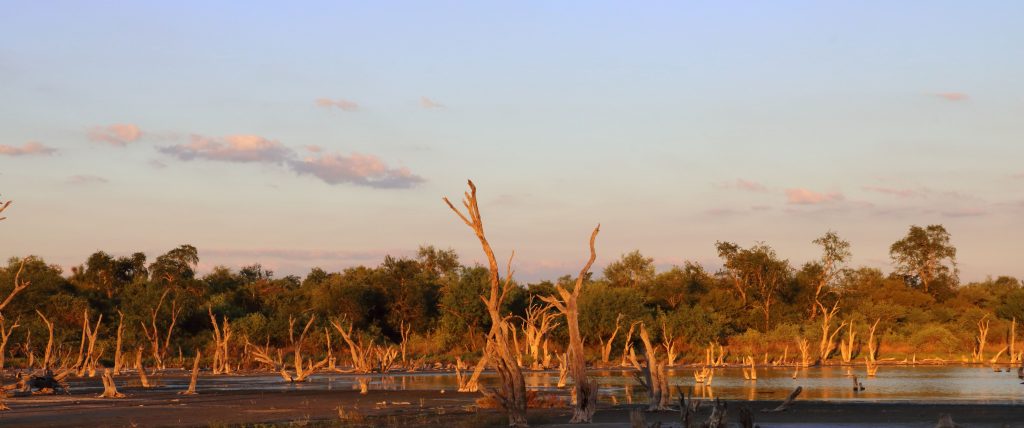
Chaco scenery
Despite stopping for a night and a quick look around Little Germany, we really wanted to press-on as quickly as we could across the Chaco. The daytime heat in mid-summer January is relentless; only when necessary do we set foot outside the cool air-con of Cuthbert’s front cab. Ah… Yes… the ‘air-con thing’… here’s a small digression from the Paraguay blog to the ‘air-con thing’…
On such long driving sectors we like to listen to podcasts to while away the hours (we can recommend The Overlanding Podcast if you aspire to this random itinerant lifestyle). It just so happens that on this particular drive, the podcast features a discussion about overlanding vehicles. The conclusion is reached that the preferred mode of overlanding is one which relies on the ‘windows down’ approach for ventilation: you can apparently “connect better with the environment”, “engage better with the people” and “enjoy the local smells”. Okaaay. We can’t argue with that approach for many overlanding environments, but in this heat, with these dust-clouds, over that distance???? Call us old softies, but (for the Chaco at least) we’ll stick with the air-con option thank you 🙂
Asunción

Lake Ypacarai
After the long, hot Chaco drive we were relieved to finally cross the Rio Paraguay into the relative cool of San Bernadino on the shore of Lake Ypacarai. The wealthier dudes from the nearby capital Asuncion flock here at weekends for cool air and water-sports thrills; we’re happy to settle for ‘Hasta La Pasta’, a shady campsite run by a Swiss/German couple on the hillside overlooking the lake. We don’t often stop at ‘proper’ campsites, but this one is a treat after a long time of ‘wild camping’.
Looking through their guest-book, it was amusing to see entries from so many overlandering travellers like us, many of whom we have previously met on our travels. There seems to be hardly an overlander who has not been here and loved it! Beautifully kept, with lots of birds and butterflies, a pretty swimming pool and delicious food (no prizes for guessing from the name… home-made pasta!) the kind of place that’s really hard to leave. A couple of days turns into a week, but we now really must move on…
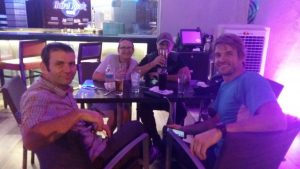
Celebrating the Dakar
Eventually we drag ourselves the short distance to Paraguay’s capital city: Asuncion. In addition to exploring what another traveller has described in their blog as ‘South America’s boredom capital’, we have two missions: first is to meet-up again with British Dakar Rally hero Lyndon Poskitt (Dakar) and his friend Tony; the second is to collect a DHL parcel that we have had sent by family from UK. No desperately urgent items, but a few things that we forgot when we were in UK a couple of months ago.
Mission No. 1 consisted of rather too many cocktails and beers being consumed with Lyndon and Tony, but nevertheless, a lovely evening 🙂 Mission No.2 was rather less successful and absolutely nowhere near as much fun! After several days of chasing, complaining and being forced to pay a ridiculous local charge to DHL, we eventually received the package. Sparing you the tedium… for now it will suffice to say that the matter is ‘on-going’ with DHL Customer Services 🙁
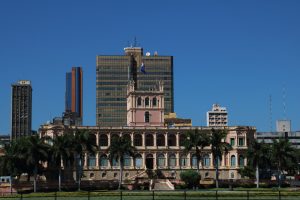
Asuncion
And what about Asuncion? Well, it’s famous for… errr… nothing. ‘Tis true that there’s not much to do here, but it’s not a disagreeable place. It’s quite chilled-out. A bit run-down in places, but clean. It has a low crime rate, people are very friendly and even when out at night it feels safe. Shops and restaurants are mediocre, but in the warm summer evenings it’s a cool place to people-watch from the pavement cafes. It’s not going to win international awards in any category that springs immediately to mind, but as capital cities go, we’d certainly rather be here than in Bolivia’s La Paz! After spending a few days down-town, we feel we’ve seen a positive side of South American work-a-day life that most tourists to the region sadly miss. What slow-time overlanding’s all about isn’t it? 🙂
Paraguay blog – Little-known gems
Next, a bit of slow-time exploring of the countryside. But what’s to see? There are precious-few Paraguay blog or travel books written about Paraguay. Luckily, our chats with the friendly locals of down-town Asuncion have revealed some little-known gems to check out. Maybe there’s a good reason that they are ‘little-known’, but selflessly on your behalf dear Cuthbert Reader, we’ll go and check out this eclectic collection: rainforest waterfalls, steam-train centre, hydro-electric dam, jesuit mission, mate factory and carnival party.
First, the small Ybycui National Park. Apparently one of the few remaining areas of the Virgin Atlantic Rainforest (no connection to Richard Branson, as far as we know 🙂 ) which used to cover the whole region but has been mostly slashed for agriculture. This was an amazing tip, pristine jungle with picturesque streams and waterfalls for swimming. Unfortunately, we do sometimes rather lose track of time and here we make the unforgiveable rookie error of arriving on a mid-summer Sunday. At least half of Paraguay had arrived on coach trips to cram themselves into the streams and falls. We watched in relief at the end of the day as they all boarded their coaches home, then had the place all to ourselves on Monday morning.
Another cool tip was Sapacai steam-train centre from which British engineers built the first rail-road on the continent in the 1800s. It was interesting to see the trains and the workshops all still in place and restored, but we next moved on to visit a much more modern feat of civil engineering: a humongous dam.
The Itaipu Dam. Excuse me… the what dam??? Exactly!! We’d never heard of it before either. Perhaps we fell asleep in that particular geography lesson at school, because this is one of the world’s most significant energy projects of our generation. It’s a joint project on the Rio Parana between Brazil and Paraguay and was until recently, unquestionably the largest hydro-electric dam in the world. Now it is challenged by some young whipper-snapper, up-start of a project in China but Itaipu still proudly boasts that in 2015 it beat its Chinese rival in volume of power generation. It supplies over 75% of Paraguay’s energy consumption and over 15% of Brazil’s. Impressive, huh?
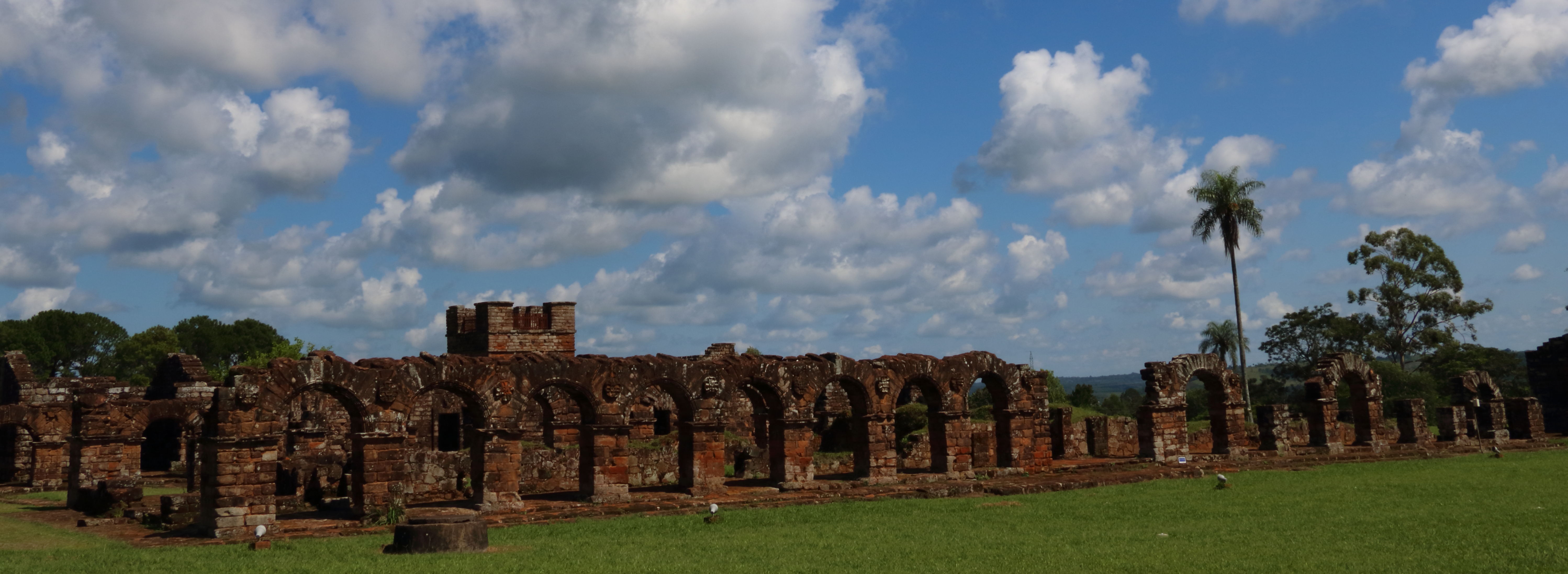 Next… south a bit. In the south-east corner near the Argentinian border are several sites of Jesuit Mission ruins. Although these hail from the same era as the Bolivian Jesuit Missions (which, true Cuthbert fans will recall 🙂 we visited and reported in these very blog pages some months ago (see Bolivia) ) these Paraguayan versions really are no more than the name suggest: ruins. The Bolivian missions are beautifully restored and far more worth the effort to visit than these Paraguayan imposters. Just across the river in Argentina are a third set of missions which we’ll be visiting soon. Sorry… we know it’s tough on the avid Jesuit Mission fan, but you’ll just have to be patient and await the next blog- instalment of Cuthbert’s uniquely informed ‘Jesuit Mission Review’ 🙂
Next… south a bit. In the south-east corner near the Argentinian border are several sites of Jesuit Mission ruins. Although these hail from the same era as the Bolivian Jesuit Missions (which, true Cuthbert fans will recall 🙂 we visited and reported in these very blog pages some months ago (see Bolivia) ) these Paraguayan versions really are no more than the name suggest: ruins. The Bolivian missions are beautifully restored and far more worth the effort to visit than these Paraguayan imposters. Just across the river in Argentina are a third set of missions which we’ll be visiting soon. Sorry… we know it’s tough on the avid Jesuit Mission fan, but you’ll just have to be patient and await the next blog- instalment of Cuthbert’s uniquely informed ‘Jesuit Mission Review’ 🙂
Not far from the ruins. the small town of Bella Vista is famously (well… famous within Paraguay at least!) the centre of the country’s mate factories. For the uninitiated in a Paraguay blog, mate (pronounced mah-tey) is a tea drunk incessantly by most, if not all Paraguayans and Argentinians and its consumption is little short of a national obsession. Anyone who has visited either country can’t fail to have noticed the ubiquitous cups, straws and flasks. Loose-leaf mate tea is infused in the cup then sipped through a bombilla, a metal straw with a filter on the end.
Such is the popularity of the drink that people wander around permanently grasping a cup full of the mate leaves and a flask of hot water (or ice-cold in summer) to regularly top-up the mate experience. Visually, it looks rather less than appealing and the tea is a bit of an acquired taste, but it’s not too bad if it’s made to a weak-ish strength. So, we thought, we’re in Paraguay’s mate-central, let’s pop along to visit Pajarito, one of the largest manufacturers. Seeing the whole mate-process was, unsurprisingly, similar to the tea making process that we saw on our visit to a tea plantation in Rwanda a couple of years ago. Nevertheless, it was a really interesting tour and museum, well put-together and a very worthwhile stop. Highly recommended.
Partaay town?
It’s almost Carnival time here in South America. Obviously, it’s ‘no-brainer’, Rio is the place for Carnival; but Encarnacion, Paraguay? Until recently we’d never even heard of the town, let alone it’s (alleged) status as the continent’s second best Carnival City. Sadly, for various reasons, we’re not going to make it to Rio for the main event weekend of 27th Feb, but our investigations reveal that Encarnacion is also known for its highly popular carnival run-up weekends.
Ever heard of a ‘Sambadrome’? We hadn’t either. Read and learn 🙂 It’s a dedicated Carnival party-zone; a permanent structure featuring a sort of artificial street down which all the sparkly Carnival dancers and floats can parade past terraces full of revelling spectators. We buy a ticket and join the queue, but not sure what to expect of this ‘canned’ version of a street party.
The atmosphere isn’t immediately buzzing, but once the samba music strikes up, the dancing starts on the terraces and the vendors weave between us with huge ice-buckets crammed with cans of beer. The sparkly girls come out, the impressive floats float down the ‘street’ in front of us and things get going. The atmosphere gathers momentum as party goers spray gallons and gallons of aerosol party-foam over each other. It’s a few hours of really good fun, we enjoy it. It’s certainly not lacking in sparkles, but it does lack the wild party atmosphere that the Rio Carnival is famed for. Next morning we are grateful for this… no hangover!!
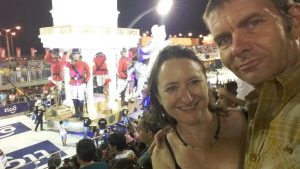 For us, the best thing about the Encarnacion carnival is that it is another Paraguayan experience where we feel we have seen a totally genuine side of Paraguayan life. Paraguay has no tourist industry to speak of, no tours and almost everywhere we went we were the only foreign visitors there. The great pleasure of coming here is not to see iconic attractions or spectate quaint rural poverty (because there aren’t any), but to join in and be part of a real country getting on with life and doing its own thing.
For us, the best thing about the Encarnacion carnival is that it is another Paraguayan experience where we feel we have seen a totally genuine side of Paraguayan life. Paraguay has no tourist industry to speak of, no tours and almost everywhere we went we were the only foreign visitors there. The great pleasure of coming here is not to see iconic attractions or spectate quaint rural poverty (because there aren’t any), but to join in and be part of a real country getting on with life and doing its own thing.
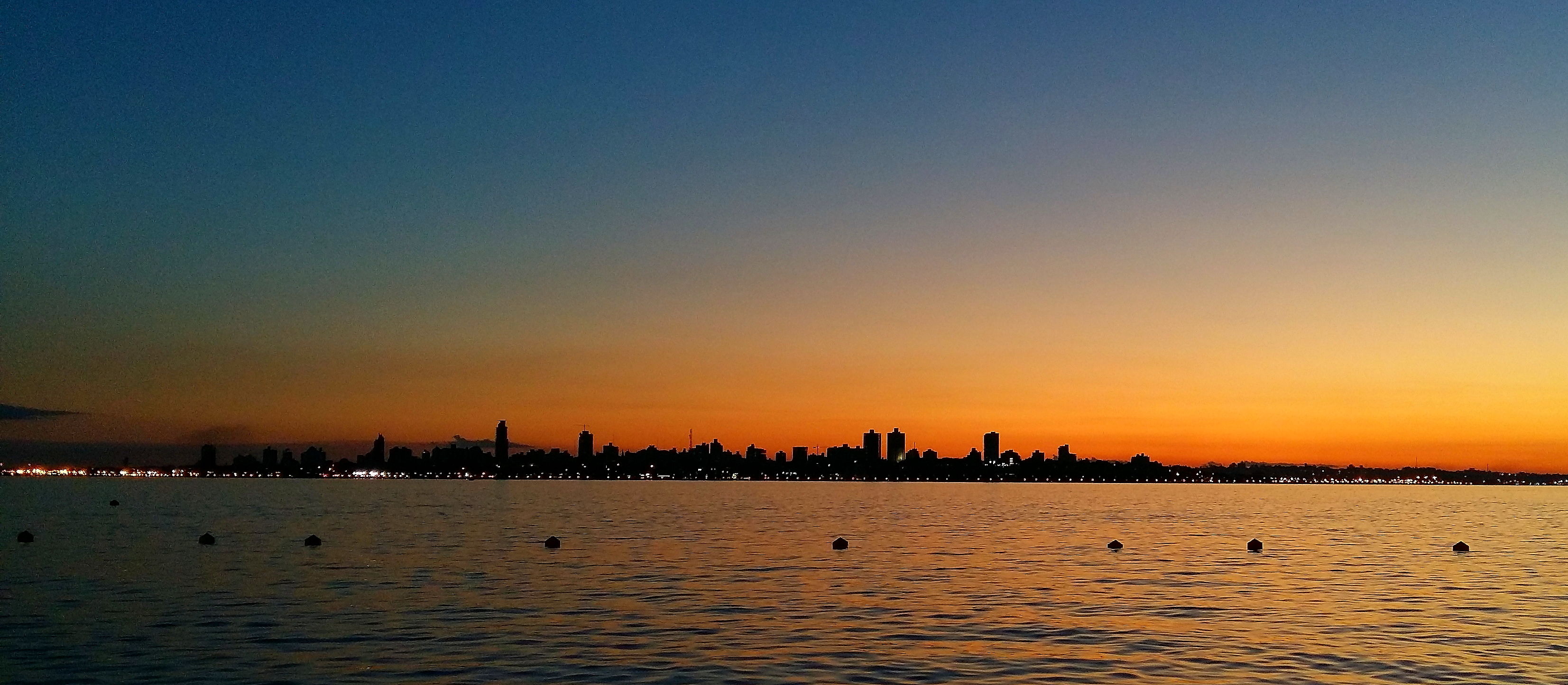
Argentina across the river… we’re on our way
Just popping across the bridge now… over the river to Argentina and up to Iguazu Falls!
Link to next blog: Little Falls, Big Falls Link to full South America home page
Paraguay Gallery
- Asuncion
- Chaco
- Celebrating the Dakar

